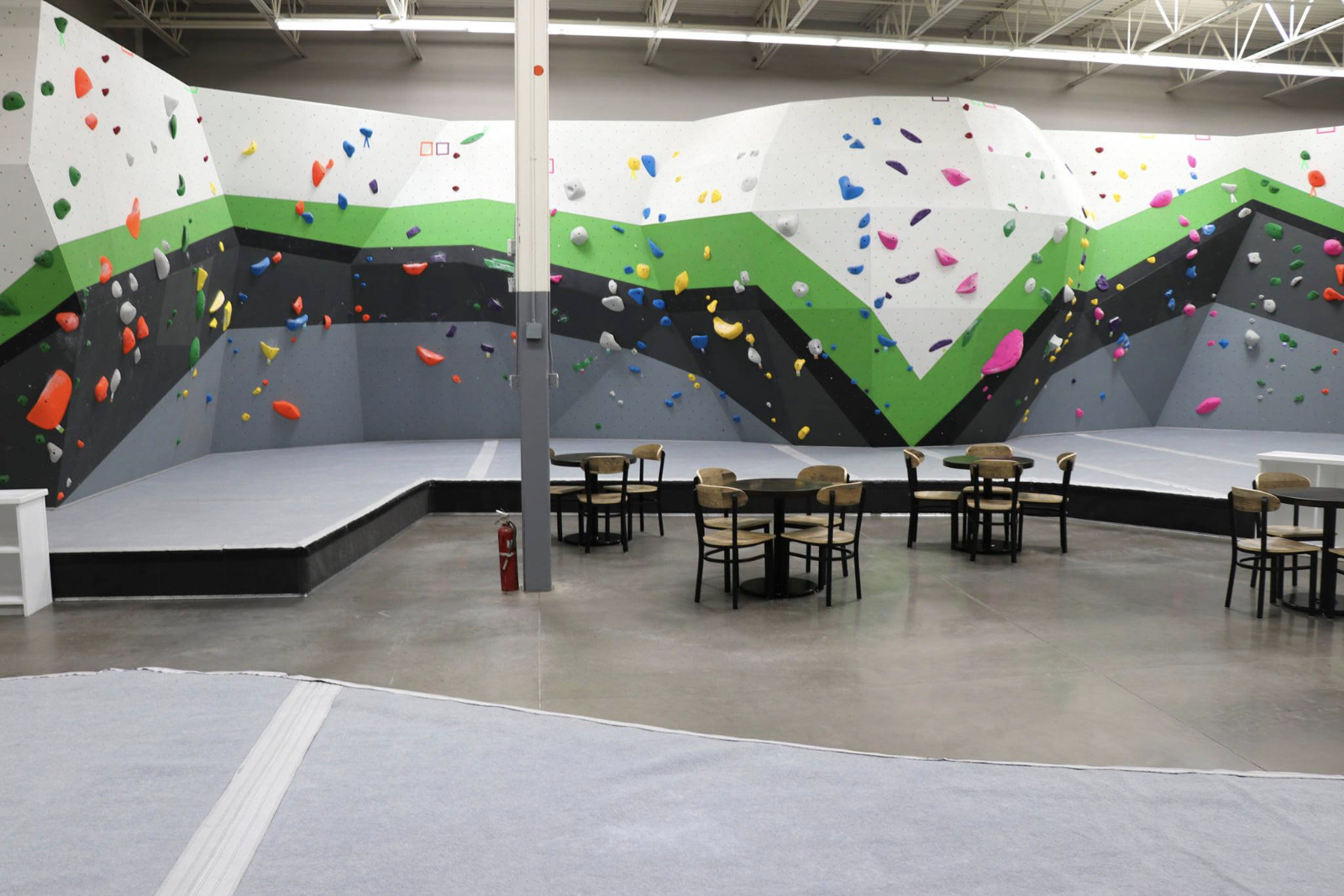
Project Overview
The Triangle Rock Club is opening a new location in the bustling Iron Works area in Raleigh and was wanting to create a modern, durable, and cost-effective flooring. The owners sought a flooring option capable of withstanding heavy foot traffic, while also providing an aesthetically appealing, low-maintenance surface. After considering various options, they opted for a grind and sealed concrete floor over the existing and newly poured concrete areas. This choice balanced durability, maintenance needs, and budget constraints while maintaining a safe, slip-resistant surface to minimize the risk of accidents. The process included grinding the floor, applying patch material, filling control joints, and applying two coats of acrylic sealer. The result was a clean, low-sheen finish that will be easy to maintain.
Step 1: Assessing the Concrete
Initial Evaluation
The first step in the grind and seal process involved a thorough assessment of the existing and newly poured concrete floor. It was crucial to identify any cracks, pits, or uneven areas that would affect the final result. The inspection revealed a mostly smooth, level surface with some imperfections that could be addressed during the grinding process.
Step 2: Surface Preparation
Cleaning and Repairing
Proper surface preparation was key to achieving a durable and aesthetically pleasing grind and sealed concrete floor. The concrete surface was thoroughly cleaned to remove any debris, dust, or contaminants. Strategically planning the placement of the safety mats before the grinding process was of the utmost importance. Minor surface imperfections, such as small cracks and blemishes, were repaired using a concrete patching compound and all control joints were filled with a quick setting polyurea joint filler, ensuring a smooth surface that will allow for even grinding.
Step 3: Detailed Edge Work
Precision Along the Edges
Detailed edge work was required to ensure that the areas along the walls and corners match the rest of the floor. This step was performed with hand-held grinders connected to vacuums that allowed for precision work.
Step 4: Grinding the Concrete
Removing the Top Layer
The grinding process involved the use of a planetary floor grinders equipped with metal bond diamonds to remove the top layer of the concrete. This step was crucial as it exposed the fresh concrete underneath, which was necessary for a successful seal.
Step 5: Cleaning the Ground Concrete
Dust Removal and Cleaning
After grinding, the floor was washed and thoroughly cleaned to remove dust and debris. This step was critical to ensure that the sealant would bond effectively with the concrete surface. The concrete was allowed to dry completely before sealing.
Step 6: Applying the Sealant
Protection and Enhancement
The sealant application was the final and one of the most critical steps in the grind and seal process. The type of sealant used can vary based on the expected traffic and the level of gloss desired. The acrylic sealer not only protects the floor from moisture and stains but also enhances its appearance. The floor required multiple coats, and each coat was allowed to dry thoroughly. This curing process was essential as it solidifies the sealant and ensures the durability and effectiveness of the flooring.
Step 7: Final Inspection and Touch-Up
Ensuring Quality
The final step involved a thorough inspection of the floor to ensure that the finish floor met all specifications.

Conclusion
Grind and seal concrete flooring is an increasingly popular choice for gym environments, particularly when installed over new concrete. This method not only provides a durable and attractive floor but also offers a cost-effective solution compared to other flooring types. The result was a clean, low-sheen finish that is easy to maintain.